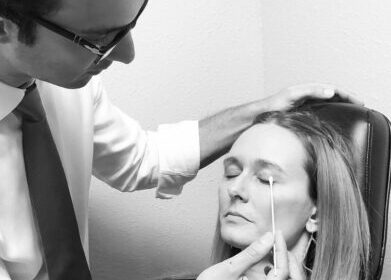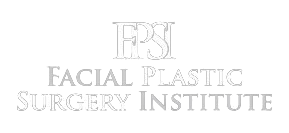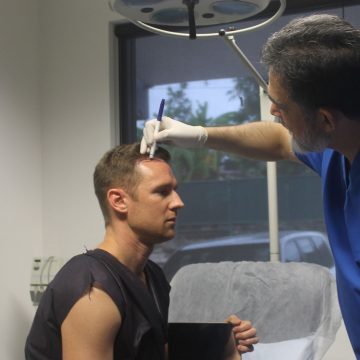Since the 1990s, private equity (PE) consolidation has been a major force in reshaping the healthcare industry, driven by market inefficiencies, fresh opportunities, and powerful economic trends.
Healthcare-focused private equity firms, in particular, have led the way in merging healthcare practices into larger regional and national networks.
Today, plastic surgery practices like yours, together with related facilities like medical spas, are among the most popular targets for healthcare PE consolidation.
With plastic surgery seen as a highly profitable field, investors are drawn to the industry, seeing it as a hotbed of opportunities for tapping into economies of scale and boosting operational efficiency.
That said, the complexity of PE often leads to confusion and hesitation among plastic surgeons. This reluctance is understandable, especially since consolidation outcomes in other medical disciplines haven’t always been ideal.
Even though consolidation is moving fast, most plastic surgeons are still operating independently, which remains a defining feature of the market.
Given these facts, you might be wondering:
- What exactly is PE, and how does it work?
- What are the pros and cons of PE?
- How do I know if PE suits my plastic surgery practice?
- What is the future of PE in the plastic surgery industry?
This article takes a closer look at the state of plastic surgery private equity, exploring the benefits, risks, and how PE could impact practices like yours. The goal is to offer a useful resource for plastic surgeons looking to better understand how PE might fit into their field.
How PE Works
PE invests in healthcare providers such as plastic surgery practices, using scale and size to help them grow in existing and future markets and support physician practice management.
Aligning a healthcare provider with the right PE partner while protecting business continuity during the process involves the following steps:
- Development of financial models: Create a detailed financial model that will help optimize cash flow and offer a platform for future growth opportunities.
- Identification of potential buyers and outreach: Determine the correct mix of potential buyers, such as strategic acquirers and PE groups. This process also includes developing and executing strategies to reach those buyers.
- Buyer engagement and negotiation: Develop a buyer marketing strategy, including solicitation and bid negotiation processes, to attract suitable offers from potential partners.
- Strategy-culture alignment: Put the client in a position to generate attractive offers from potential buyers. Such offers must consider financial terms and an excellent strategic and cultural fit.
- Peak leveraging of the deal: Negotiate favorable conditions and results for the client.
- Thorough due diligence: Conduct background checks on potential buyers to select the best partner for the client’s business and long-term goals.
- Deal term negotiation: Negotiate regarding varying economic and structural deal terms that can benefit the client at the time.
- Pre-closing due diligence: Ensure that daily operations are not affected and that the chances of closing the deal are maximized.
Pros of Private Equity
Considering the resources that private equity acquisition can bring, PE entities are an appealing exit strategy for plastic surgeons like you.
Acquisition by PE can help you focus on your patients without the extra work of marketing, accounting, human resources, and information technology.
PE consolidation can especially benefit your plastic surgery practice if you want a more balanced lifestyle.
How so? PE consolidation reduces the work involved in running an enterprise with growing expenses and decreasing insurance reimbursements amid increasingly convoluted regulations.
If the business is structured correctly, PE acquisition can also maximize plastic surgery practices’ economies of scale for equipment and supplies, including fillers, implants, and injectables.
Cons of Private Equity
While PE consolidation can lead to larger EBITDA (earnings before interest, taxes, depreciation, and amortization), practitioners must be aware of possible dilution of equity percentages as more practices are brought in over time.
As a plastic surgeon considering a possible PE acquisition, you need to ask yourself the following questions:
- How long do I plan to practice?
- Can I accept surrendering my autonomy to the PE entity?
Some practitioners might not be suited to losing control over policy-making and operational approaches once they are acquired by PE.
If you thrive in an environment where you have a say in drawing up policies, running your practice, and hiring staff, then PE is not for you.
Also, please note that PE leadership tends to focus on business aspects rather than on patient care. PE directors might not even know the intricacies of plastic surgery and patient service, and their banking and finance agendas may differ entirely from medical professionals’ goals.
Structure of the Private Equity Entity
When considering acquisition by PE, you need to ask yourself the following questions about the entity’s structural details:
- What is the PE entity’s track record?
- What is the PE entity’s level of economic stability?
- Does the PE entity use a franchise model, or will my practice continue under a larger umbrella?
- What is the PE entity’s organizational structure? To whom will my practice and my staff report?
Also, please remember that most PE entities have operational timelines lasting only five to seven years, after which they might sell the business to another entity or make a public offering. At this point, you will no longer control the sale to a second entity.
Here are further questions to contemplate before your PE acquisition:
- If the PE entity sells the business, who will run it, and what would be the philosophy of the next group?
- What happens to individual practices like mine, and what will the post-sale hierarchy be?
- Will the new group continue my practice’s culture and philosophy, or will they change these?
Further Considerations: Track Record, Oversight, Reporting, Compliance, and More
Before engaging in PE consolidation, your plastic surgery practice must consider whether you will be the first practice in the entity or it’s already operational and you’re just an additional practice.
Being the first practice comes with significant risks, as the PE entity might still be wrestling with challenges that typically arise in a venture’s initial journey toward better efficiency and stability.
The lack of organizational efficiency in these early stages might affect the distribution of financial reports for both the entity and your practice, leaving you in the dark about the entity’s stability.
If your PE aspirations are to be fruitful, your practice needs to consider the following key healthcare regulatory due diligence considerations—especially if your practice is preparing for a future sale.
Corporate Practice of Medicine
PE acquisition of plastic surgery practices requires a thorough understanding of the Corporate Practice of Medicine (CPOM) doctrine, a component unique to healthcare transactions.
Plastic surgery practices, particularly those with active med spas, may have non-physician injectors as owners (where a practice has a surgeon as a “medical director”) or minority owners (where a surgeon owns the practice, together with a mid-level provider).
CPOM doctrines, which prohibit lay entities (not owned by practicing surgeons) from operating and presenting themselves as medical practitioners, are active in multiple states and jurisdictions.
CPOM introduces complexity to PE acquisitions of plastic surgery practices, as the doctrine allows only licensed physicians to own and operate the business.
CPOM might also prevent mid-level healthcare providers like nurses and physician assistants from becoming minority owners.
Given these dynamics, PE investors must evaluate the consolidated entity’s organizational structure to maximize the acquisition’s impact.
This evaluation ensures greater operational efficiency by determining the following:
- Who owns the plastic surgery practice and med spa lines of business?
- Are these businesses, along with other components like cosmetic surgery and reconstructive surgery, organized as separate entities?
Additionally, this evaluation helps all parties involved address the discovered issues and conduct reorganizations as needed before the deal is closed.
Another alternative PE investors could consider is the “Friendly PC” model, in which the plastic surgery practice is reorganized as an entity owned by a surgeon or another licensed provider.
This professional entity will continue to employ physicians and licensed providers.
Meanwhile, a lay entity acquires and employs the non-clinical assets and staff from the professional entity. The lay entity is often a management company the PE investor might own.
These two entities—professional and lay—agree to a management services contract allowing the management company to handle, for a fee, the non-clinical business operations of the practice and the associated med spa.
Business Licensure
A plastic surgery practice with a med spa may require more permits than other practice types. PE investors should do their due diligence to determine whether state law requires the med spa line of business to hold a license as a healthcare clinic, a salon, or both.
PE investors should also consider whether the practice will need an entity-level license to own or operate medical devices and specialized equipment. For instance, practices that own and operate lasers are required by many states to register the laser and meet specific safety standards.
A private equity investor must ensure these licenses are up to date and that the practice has procedures in place to maintain the licenses.
Scope of Practice
Even more so than other specialties, plastic surgery practices tend to operate with a wide range of licensed and non-licensed individuals to provide patient services. Including non-physicians and non-clinicians in the equation can introduce unique issues regarding the scope of practice.
Non-physicians might be involved with non-surgical procedures done through the med spa portion of the business, such as when registered nurses apply injectable dermal fillers and neurotoxin injections. Non-licensed professionals also commonly conduct laser hair removal.
However, some successful plastic surgery practices operate outside the bounds of compliance. This is where the background check aspect of the process comes into play, as the PE investor must assess if employees are operating within the scope of their practice.
The PE investor should also confirm whether both clinicians and non-clinicians can perform specific non-surgical procedures or if the state prohibits certain licensees from performing them.
Even when non-clinicians are prohibited from performing specific procedures independently, they can conduct them if delegated by supervising clinicians.
Moreover, procedure classifications can vary across state lines. For instance, some states consider microneedling a medical treatment that cannot be performed by non-clinicians unless supervised by a physician.
Meanwhile, other states allow non-clinicians to conduct microneedling independently.
Application of HIPAA
The Health Insurance Portability and Accountability Act of 1996 and its implementing regulations (HIPAA) might even consider wholly self-pay or cash-pay plastic surgery practices as covered entities.
The importance of PE investors is highlighted when assessing whether a specific plastic surgery practice is a covered entity. If it is, determine how compliant the practice is with HIPAA’s provisions on training, patient privacy, business associate agreements, security risk assessments, and unauthorized disclosures.
For example, HIPAA regulates the use of before and after photos on plastic surgery practices’ websites and other marketing materials. Per HIPAA provisions, plastic surgeons can use such images to prove medical aesthetics competence only when the patient provides explicit authorization.
Application of the Stark Law and the Anti-kickback Statute
The Stark Law, another name for Physician Self-Referral Law (42 USC 1395nn.), is a series of federal regulations restricting physician self-referral. The Centers for Medicare and Medicaid Services (CMS) enforces the law under its fraud and abuse regulations.
These statutes prohibit physicians from referring Medicare or Medicaid patients to entities that provide designated health services (DHS) if the physician or their immediate family has a financial interest in the entities.
Initially applicable only to referrals for clinical laboratory services, the Stark Law’s scope has since expanded to cover a broader range of DHS, including physical and occupational therapies, clinical lab tests, radiology services, medical equipment, and inpatient or outpatient services.
On the other hand, the Anti-Kickback Statute (AKS) is a criminal law that prohibits knowingly paying or providing compensation to encourage or reward patient referrals.
The AKS also penalizes the generation of business for any item or service for which payment may be made under a federal healthcare program like Medicare or Medicaid.
Payment or reimbursement can include items and services beyond cash, including expensive meals, free rent, costly hotel accommodation, or inflated payments for positions such as medical director or consultant.
While these rewards may be common practice in other industries, paying for referrals under federal healthcare programs violates the AKS and is considered a crime.
For PE investors conducting healthcare background checks on plastic surgery practices, it’s crucial to determine if a practice is engaged in conflicts of interest that may be subject to the Stark Law and the AKS.
An example that implicates these laws is when a plastic surgery practice offers neurotoxin injections for non-aesthetic conditions that may be covered by Medicare or Medicaid, even if most of the practice’s healthcare services may not be covered by federal programs.
Valuation and Financial Concerns
Medical practices considering acquisition by a PE entity need to determine whether consolidation is an exit strategy or whether staying in the industry longer is an option.
If you are contemplating a merger with a PE entity, consider whether you want to receive a certain percentage of cash as an upfront payment or a percentage of equity, which is often a negotiable amount.
You can further gauge your pre-consolidation standing by establishing your practice’s value through an outside professional entity. This valuation depends not only on annual income but on whether you own the property and related facilities like med spas or accredited operating rooms.
Consulting with experts like accountants or tax professionals will help you understand how to proceed with the sale’s taxation. Consider including these items in the sale contract as well:
- An option to keep working if you choose to do so
- A disability plan
- A liability insurance plan for the office
- A provision for tail-end malpractice coverage
- A clause of dismissal only for cause
- A set amount for medical organization fees, travel, registration, personal transportation, and other items that qualify under pre-tax benefits
Potential Changes to Anticipate
PE consolidation’s bottom line is usually focused on either growing revenue or cutting costs, and you might have questions about who makes such decisions—will it be you or the corporate human resources teams that may not fully understand your practice’s unique needs?
Additionally, PE entities aim to expand by acquiring more practices. Thus, you might wonder how much influence you have over evaluating these new practices and how their operations could affect your professional standing.
Suppose one of the practices being considered has a questionable background. In that case, it’s essential to consider the merger’s implications on your image and reputation.
You might have questions about how much control you’ll have over major decisions like hiring or letting go of people and establishing their compensation.
You might have reservations about possible adjustments to staff perks like fillers, neurotoxins, or other procedures and how any changes in these bonuses could affect your people’s morale.
You might also have questions about the learning curve implied by new systems like updated accounting methods, electronic medical records, and other tools. Your practice needs to consider if the benefits of these new systems outweigh the additional labor required of you and your staff.
Compensation Structure and Control
You must determine how compensation will be calculated post-consolidation, whether it will be based on a salary plus a percentage of the billing, a straight salary, or only a percentage of overall productivity.
Will your practice be required to reach a monthly production quota to receive compensation? The point of the question is that while the value of your equity might grow, your take-home pay might also suffer a decrease.
Sometimes, patients who have undergone treatment might need to be immediately returned to the operating room to address unexpected issues. Your practice needs to know how the expenses involved in such procedures will be handled post-merger.
The steady forward march of science will also yield ever-newer technologies that can benefit plastic surgery practices. In considering PE, ask if you will have the last word on acquiring new equipment, lasers, and injectables.
Marketing Strategy and Control
Before the PE entity acquires your practice, ask if the marketing will be “branding” for the broader PE entity or just for your practice.
Will digital marketing be handled at the corporate level or by individual practices like yours? Who will ultimately control your advertising budget and your practice’s new website?
Contingency Planning
While PE acquisition has multiple lucrative benefits, the harsh truth is that only some PE entities have seen success. Before cementing any PE agreement, your practice must consider the difficulty and expense of disengaging from such an agreement.
In addressing the possible lack of liquidity and getting the value of your equity, ask if you will need to wait for the PE entity to flip your equity or bring it public to maximize its value.
Be aware that if you agree to receive deferred compensation and then decide to terminate your employment, you may end up forfeiting this amount.
The Future of Private Equity in Plastic Surgery
Considering that plastic surgery does not traditionally rely on referral relationships and insurance payors, and that the discipline has only minimal interaction with the existing health system, plastic surgery private equity investment is likely to intensify moving forward.
However, long-term success will depend on how a PE entity will be managed. Many plastic surgeons might not find consolidation a good fit as they are more used to having total control over their practices.
Still, there are PE success stories to be told. In some cases, the private equity deal considers the accompanying risks and complexities, with the PE entity adopting an approach that involves practice owners as physician leaders while remaining on the sidelines to direct growth.
Contact us today if you have other questions about marketing or growing your plastic surgery practice. Call us at (+1) 310 879 8003 to book your obligation-free, pitch-free consultation and find out how we can further grow your business.









